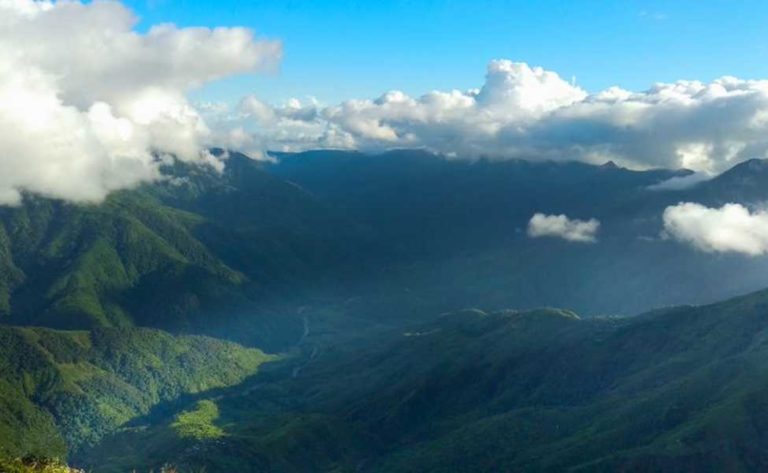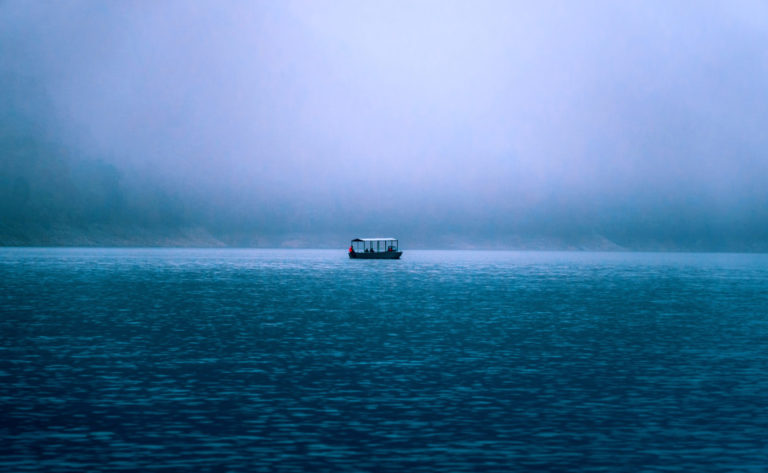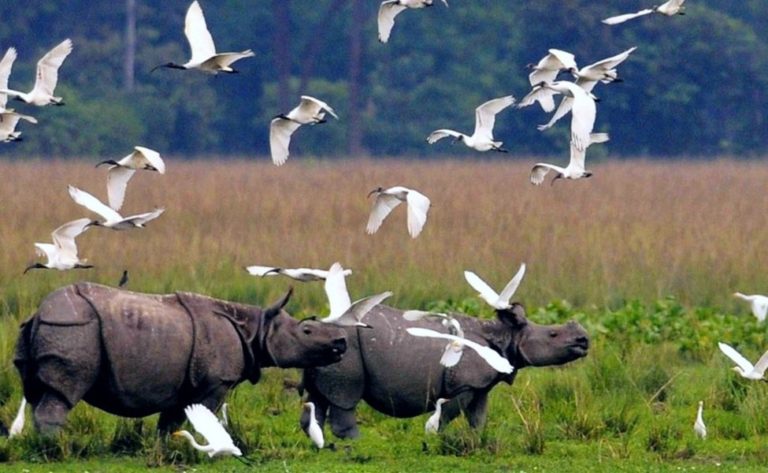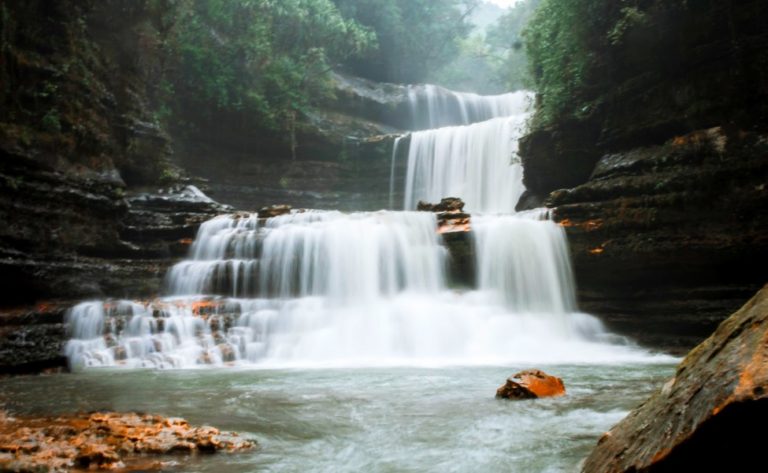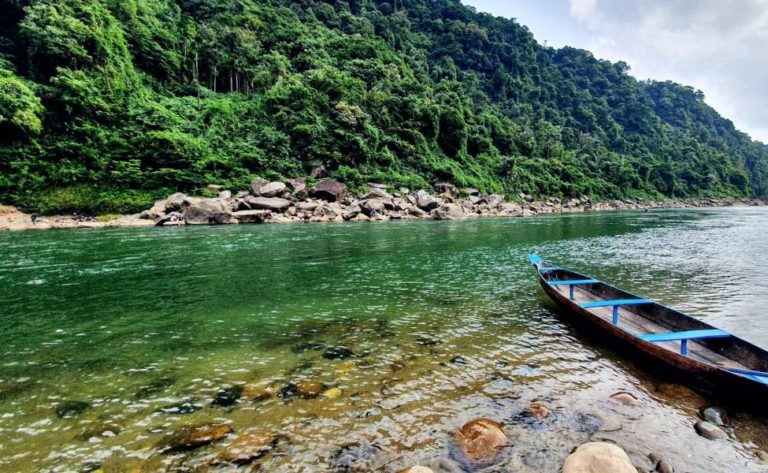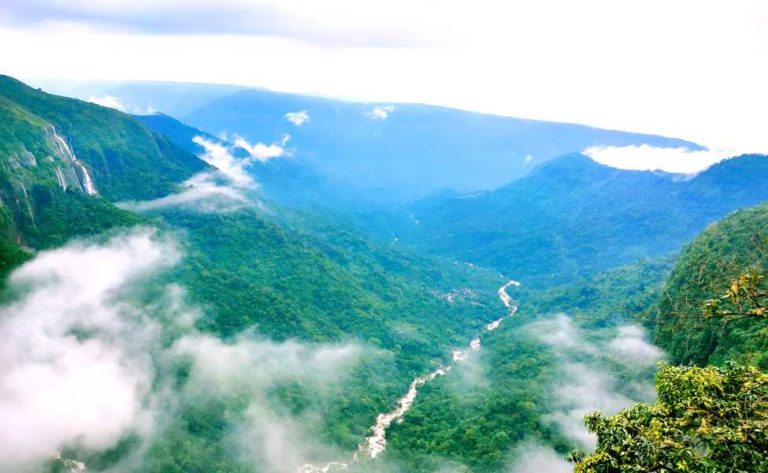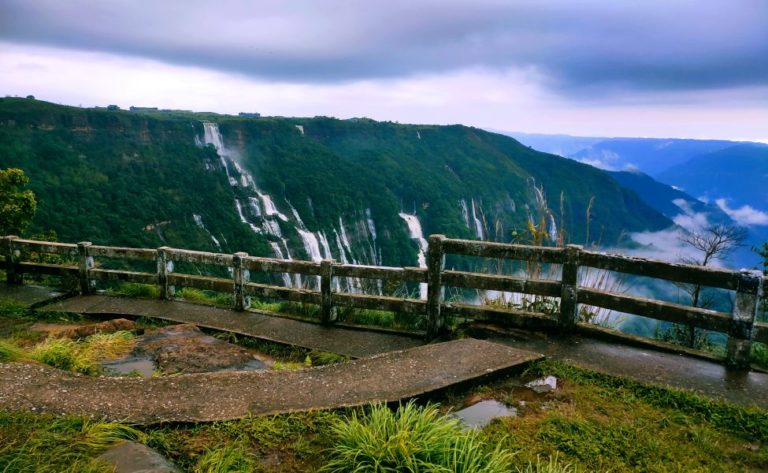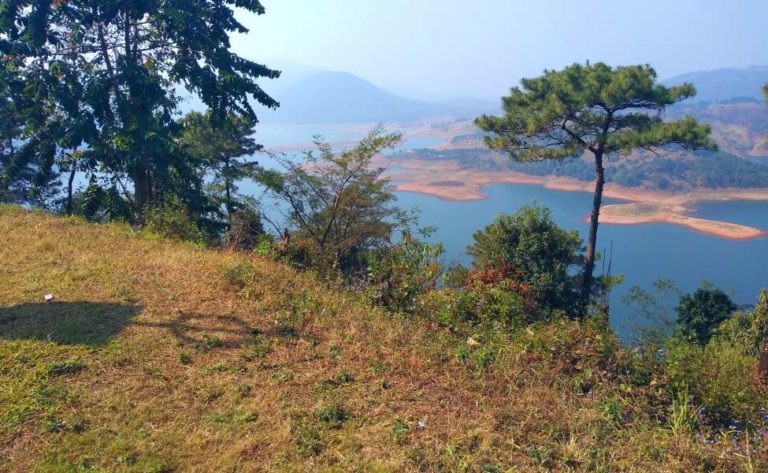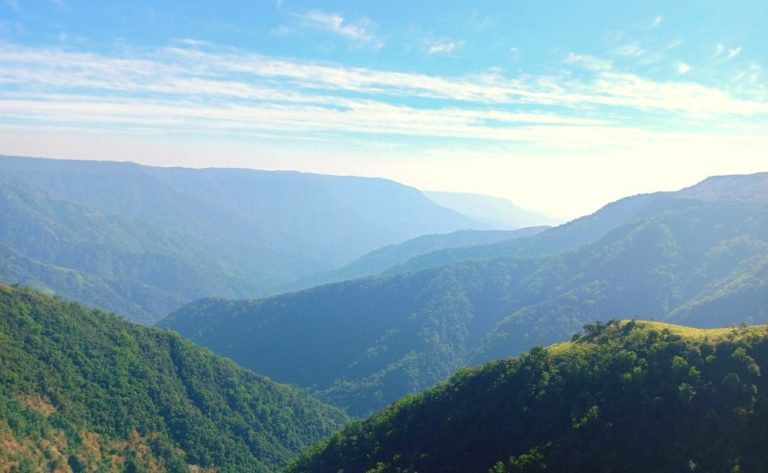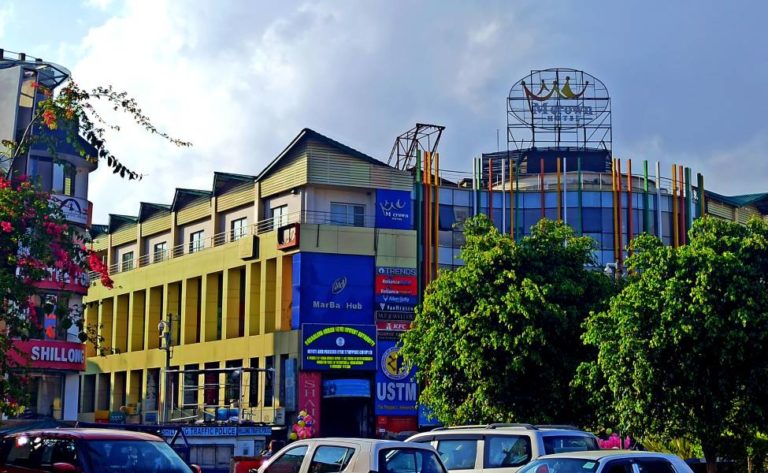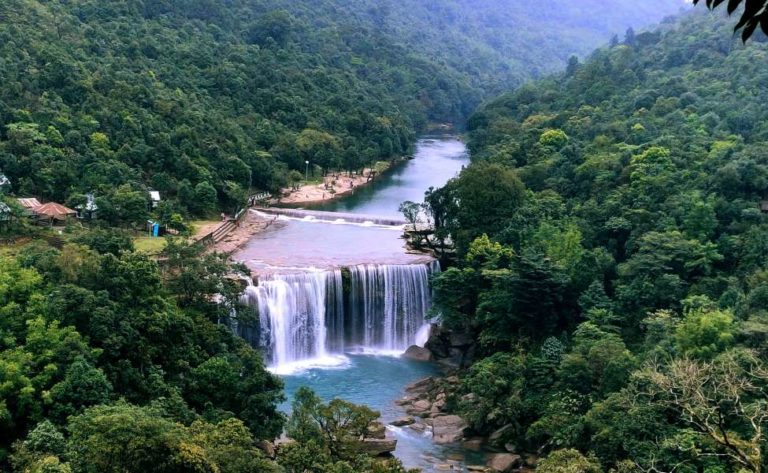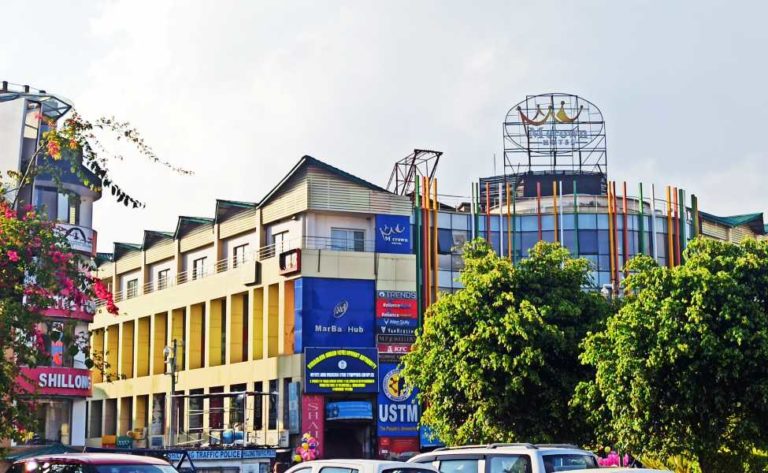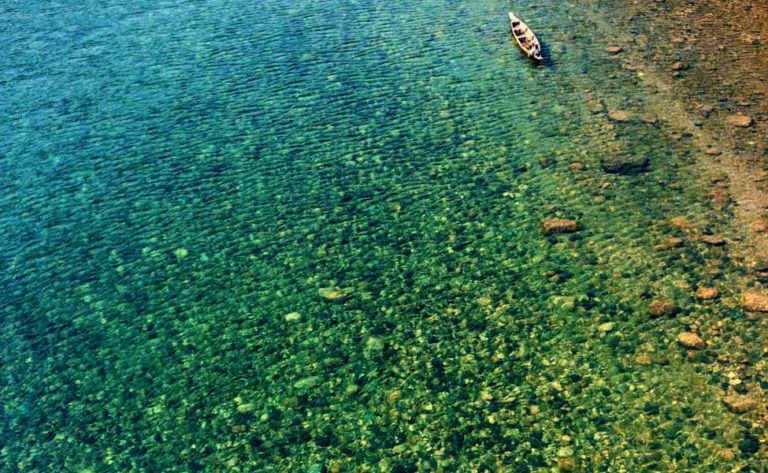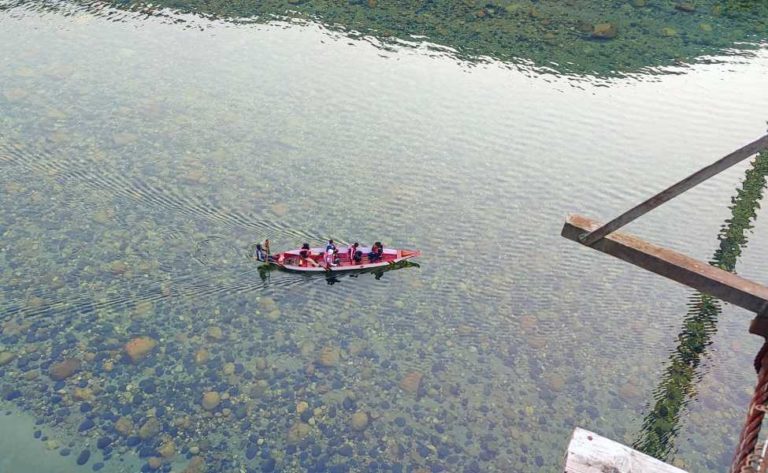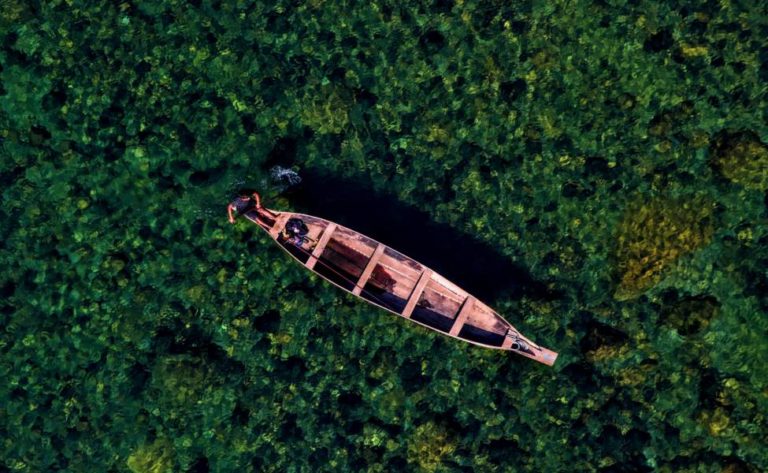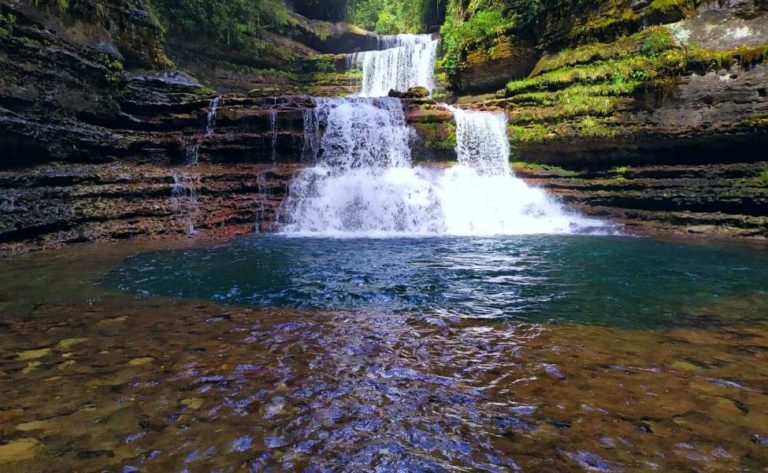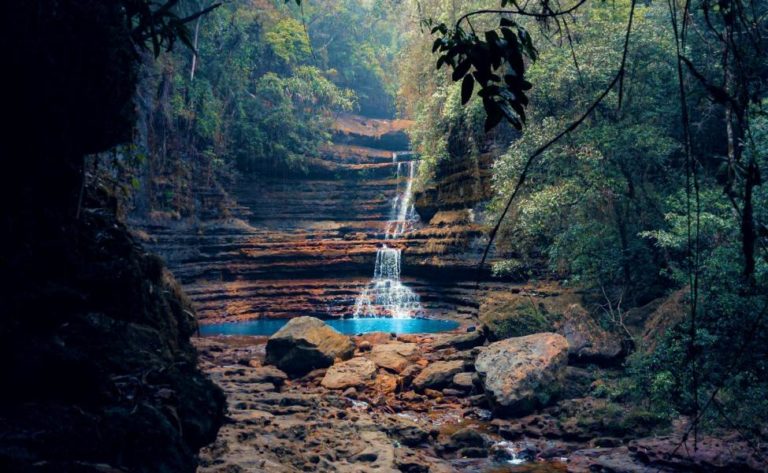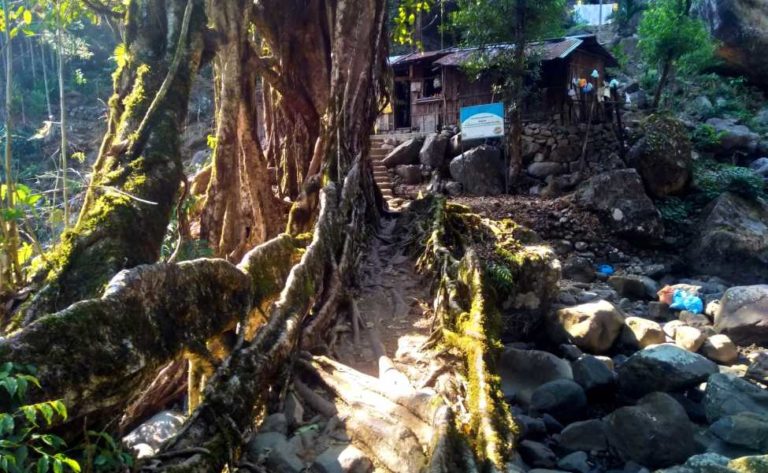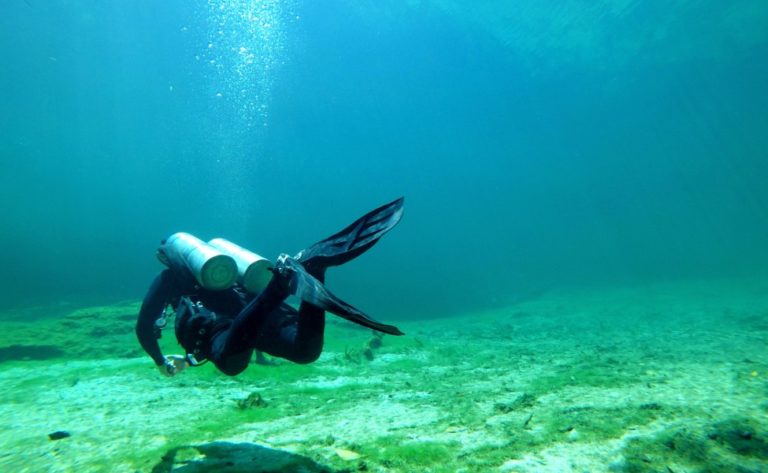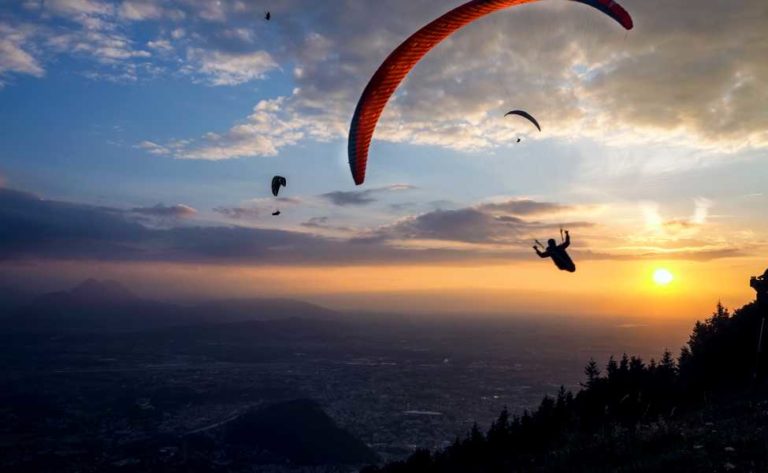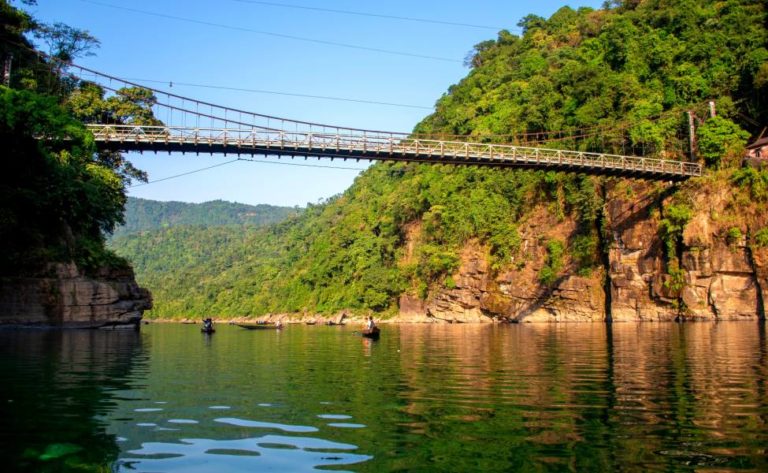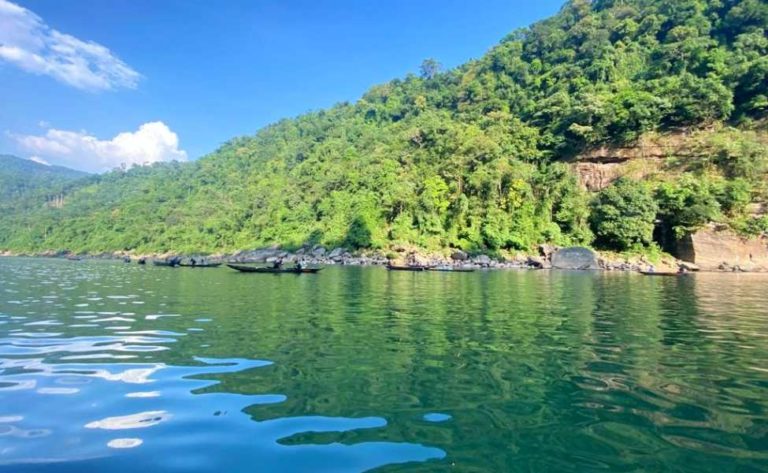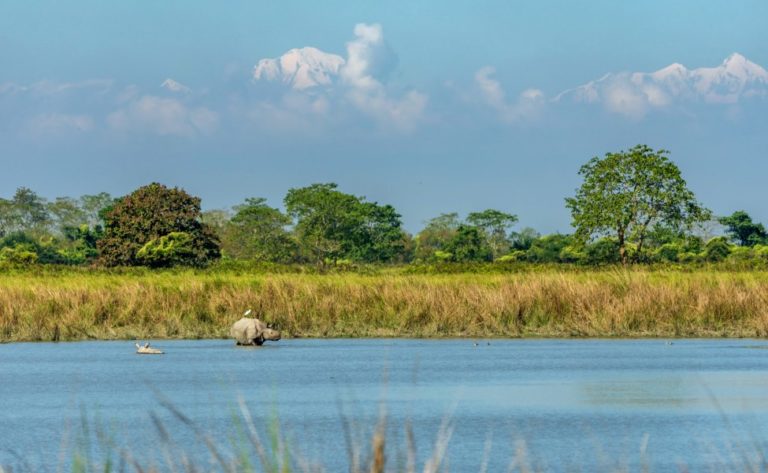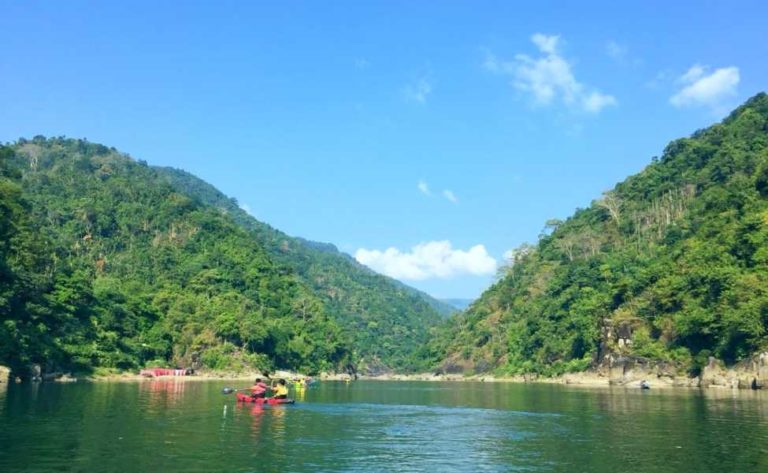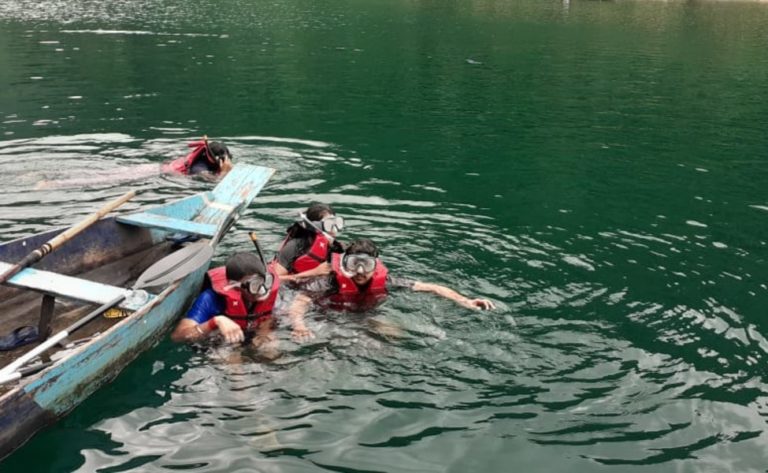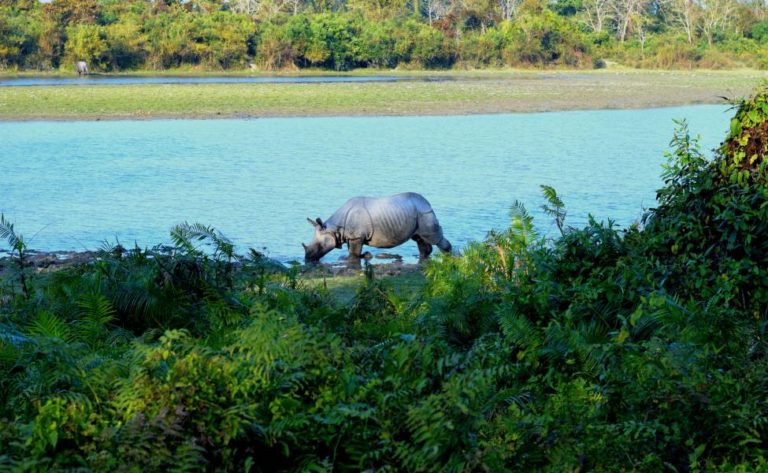
Things to do in Kaziranga
Things to do in Kaziranga
A world-class UNESCO site in Assam, Kaziranga National Park was created in 1908 and has a total size of 430 km2. It is well recognised for housing two-thirds of the big one-horned rhinoceroses in the world. Not only that, but it’s a vibrant and beautiful Tiger Reserve with a unique and significant place on India’s wildlife map. This preserve, known as the “Serengeti of the East,” is equipped with a thriving and varied range of geological features, making it a fantastic location to see endangered species like tigers and great one-horned rhinoceroses. Kaziranga is well-known for its diverse wildlife population, lush greenery, and prominent conservation projects. Due to population growth, the national park was designated as a tiger reserve in 2006; it is one of the few places in the world where tiger populations have increased rather than declined. Along with tigers and rhinos, BirdLife International has designated the park as an Important Bird Area due to the large population of black-necked storks, Asian Openbills, white-fronted geese, Baer’s pochard duck, ferruginous ducks, and other birds that migrate to the park every summer. The park’s fame has slowly increased over the years due to its amazing wildlife conservation initiatives, rendering it one of the most popular and adored tourist destinations in Assam. Among the most thriving trees you can see on a safari in the park are the Indian gooseberry, elephant apple, cotton tree, and kumbhi. On this journey, which includes alluvial savannas, wetlands, and tropical woods, you will sense at one with nature. It’s a long way from the nearby bustling city of Nagaon, but it’s the ideal place to stop for a snack while cruising down the Hooghly, Lower Ganges, or Brahmaputra rivers. You will be in enamored of Kaziranga National Park from the moment you land and wish to return time and time again, regardless of the river tour you select. With a range of recreational opportunities to enjoy, this park in Assam, which has a total area of over 430 sq miles, is great for trips with family and friends.
Travel Guides
Things to do in Kaziranga
WILDLIFE SAFARI
India is one of the best places to see wildlife because it has an unrivalled variety of flora and fauna. National parks and wildlife sanctuaries were established many years ago to protect these forests and wildlife .The conservation of nature has benefited greatly from the efforts of the Indian government. The common man now bears a greater responsibility to comprehend the true meaning of wildlife and contribute to wise conservation. In our opinion, the only practical alternative for discovering uncharted paths and pristine natural landscapes of woodlands or deserts is a Jeep/Elephant safari. The Jungle Safari is one such safari. Some wildlife enthusiasts define it differently; they call it a forest trail, a nature walk, or trekking. Safari in the savannah During your travels through nature reserves, sanctuaries, and protected areas, develop a new appreciation for animals. A jungle safari is, in a phrase, one of the ideal ways to experience Natural Environment. Kaziranga National Park is a natural wonder that offers a wonderful glimpse into the wild and imprints itself on people’s long-term memories. It is a stunning heaven of birds, animals, and greenery. Park safari is one of the most popular tourist attractions and activities. In Kaziranga, one can enjoy elephant rides, Jeep safaris, and trekking to discover the treasures of wildlife. To manage the park’s wildlife jewels, the park is divided into four ranges: the Kaziranga Range, the Eastern Range, the Western Range, and the Burapahar Range. Kaziranga Nature Reserve Jeep and Elephant Safari: The highlight of this trip is the Kaziranga National Park jungle safari.
Elephant Safari: You may witness vegetation like alluvial sawtooth to woods, tropical semi-evergreen woodlands, and tropical moist semi – deciduous forests while riding an elephant through the park, which is the ideal way to explore it. Because this park is spread out over a large area, an elephant safari is the best option for sightseeing and birding. The nature aficionados from all over the globe to this ride because it is such an intriguing pastime. The deep jungles and rich bio variety of Kaziranga, in the Assam region of north-eastern India, make it a prime wildlife attraction.
Jeep Safari: The best vantage point for viewing Kaziranga’s top sights is from a Jeep, which is typically escorted by a guide or a security guard. An amazing way to observe tigers, one-horned rhinos, wild bison, elephants, herds wild deer, Pythons, and many other wildlife and birds is on a Jeep Safari.
Trekking: Trekking is another well-liked tourism activity in Kaziranga National Park attracts tourists from all over the world. For travellers who prefer to undertake their own bird viewing and sightseeing, wandering in Panbari Conservation and Kukurkata Reserve Forests is the ideal alternative. The Kaziranga forest’s Kukurakata Hills top provides a breathtaking vista of the floodplain ecology. These Reserve Forests seem to be well for housing Asian elephants and huge Indian one-horned rhinoceroses.
BIRD WATCHING
Kaziranga is well-known as one of the most beautiful places in Asia to see wildlife and birds, which are an important part of the great national park. Kaziranga has been designated as an Important Bird Area (IBA) by Birdlife International (a bird conservation organisation based in the United Kingdom), and it is home to approximately 478 bird species, including both resident and migratory birds that makes it a popular birding place . A wider and more exciting variety of birds is available to birders visiting Kaziranga. Kaziranga’s lush green vegetation is home to some of Asia’s most fascinating birdlife. Kaziranga, a UNESCO World Heritage Site, aids in the conservation of some of the 25 globally threatened birds and 24 near-endangered birds. Raptors are said to be an indicator of a healthy environment in Kaziranga. Among the endangered species are the lesser kestrel, larger spotted eagle, fair skinned fishing eagle, Pallas’s fish eagle, and grey-headed fish eagle. There used to be seven distinct vulture species living in Kaziranga. 99% of the steady vulture population died from kidney failure brought on by eating the veterinary medication diclofenac in domestic animal corpses. Due to their extensive range, the red-headed vulture and Eurasian black vulture are still considered near threatened, but the Indian vulture, slender-billed vulture, and Indian white-rumped vulture have all suffered catastrophic population loss and are now all but gone from the wild, including in Kaziranga. Similar reductions have occurred in India’s other two vulture populations. Outside of India, there are still many griffon vultures and Himalayan griffons. The natural niche of scavengers in Kaziranga is critically compromised by the demise of so many vultures. The region’s largest population of Indian one-horned rhinos in the world, Eastern Barasingha and wild water buffalo, Elephant, and Tiger, as well as one of the far more international outdoor pursuits known as birdwatching, are all found in Kaziranga. Unquestionably, Kaziranga is a birdwatcher’s paradise! The Kaziranga National Park, a World Heritage Site, is a gift from nature to humanity. An organised and carefully prepared excursion to Kaziranga for bird watching leaves a lasting impression.
KAZIRANGA ORCHID NATIONAL PARK
The highest population of one-horned rhinos is found in Kaziranga National Park, which is well-known for this fact. However, a void in the tranquilly of Kaziranga tourist has recently been supplied by the national orchid and Ecological Park. The faunal landscape of Assam’s Kaziarnaga has unquestionably changed with the creation of the Kaziranga Orchid and Biodiversity Park. The state of Assam is primarily renowned for its orchids, not for tea or petroleum. A diverse plant family with intricate, frequently ostentatious blossoms is the orchids. It represents our cultural heritage and serves another purpose. There are about 35000 different types of orchids in the globe, with 1314 of them being found in India. Additionally, it’s fascinating to note that Assam alone is home to 402 of the 850 types found in north-east India. Over 600 types of wild orchids have been gathered at the Kaziranga Orchid National Park from all over north-east India. In order to give guests a beautiful and natural sensation that puts them as close to nature as possible, this magnificent orchid has been planted in a wild state. The complete collection, as well as several hybrid types, are kept in a greenhouse; some of them were solely gathered from the state’s local region.
Two main objectives guided the creation of the paradises of North East India. The first is to keep orchids in their vast variety, and the second is to spread knowledge of this magnificent work of nature.
North-East India receives complete approval from this park that it is a centre for extremely rare Indian providing samples that has to be safeguarded and preserved. In addition to these, the park features a garden of medicinal plants, a museum dedicated to rice, a product distribution facility, a separate garden for regional vegetables and flowers, and a special area for native fish species. In addition to its cultural hubs, the region has a large forest with a variety of indigenous tree species thriving there. Keep an eye out for natural bamboo and cane species inside the park.
RIVER CRUISES
Cruise down the Brahmaputra, one of the world’s largest rivers. In terms of discharge and sedimentation, the Brahmaputra ranks among the biggest rivers on Earth and traverses the State of Assam. It is the sole river on the Indian Subcontinent with a male name because its Sanskrit name translation is “son of Brahma” (putra means “son”).The river rises in the Angsi glacier in Tibet and then runs through that country, as well as through Arunachal Pradesh, Assam, and Bangladesh before joining the Ganga and emptying into the Bay of Bengal. The Hindu, Buddhist, and Jain communities all regard India’s Brahmaputra River, which flows through Assam and Arunachal Pradesh, as one of the holiest rivers in the country. The Brahmaputra is the only river in India from which Jeep and elephant-drawn safaris into the Assam National Park are possible. From its source in the Tibetan Himalayas to its mouth in the Bay of Bengal, the river traverses this lovely state for 1800 km. There are so many fascinating things you may do while floating down this wonderful river. Everyone can find something there. For wildlife enthusiasts, it provides breathtaking wildlife viewing and bird watching opportunities; for cultural travellers, it provides a glimpse of the state’s diverse and colourful ethnic mix, as well as neo-classical colonial palaces, Buddhist archaeology, Hindu temples, and Islamic architecture. Assam Tourism and private operators both offer cruises on the Brahmaputra River. Some of these offer small tours around Guwahati, while others provide luxury services to Kaziranga and beyond. The boats stop at national parks like Majuli, one of the biggest riverine islands in the world, and Kaziranga National Park, a World Heritage Site. Brahmaputra cruises provide activities like as elephant and jeep safaris, village walks, tea garden excursions, barbeques on lonely river islands, live entertainment, rickshaw tours of rural towns, and visits to craft studios.
BOAT SAFARI
Although you can ride a jeep or an elephant into the heart of the Kaziranga National Park and Tiger Reserve, these activities are often only offered on specific tourist routes. Your first preference should be the Jeep and Elephant rides in Kaziranga Wildlife Park’s well-known ranges. If seeing the Indian One-Horned Rhinoceros and other species of Fauna is your only reason for visiting Kaziranga National Park, go on a Jungle Safari. The Boat Safari is a one-of-a-kind experience because you get to travel into deeper parts of the forest, particularly the river bank, which is a great place to see animals that come here to quench their thirst. Additionally, some animals favour hunting close to the water’s edge. The Boat Safari could be a fantastic option of Safari here at the Agoratoli range if you want to witness the powerful monsters of Kaziranga. The Boat Safari is typically advised for groups of at least two people because you must rent the full boat for your safari adventure in the Agoratoli range of Kaziranga Park. Tourists should schedule a slightly earlier elephant safari into Kaziranga’s center from the park’s Bagori Safari range, then a Jeep safari and a boat safari at the Agoratoli Range. The Agoratoli range offers many opportunities for exploring Kaziranga National Park’s remoteness. You can stop at a couple of the Environmental Camps in this area because they are a little bit removed from the National Highway that passes through Kaziranga National Park. Spend a whole day at Kaziranga National Park leisurely, away from the busy tourist areas of the Park. At the moment, visitors can go on boat safaris to explore the Brahmaputra River’s waters at the “Bhomoraguri Boat Safari” part of Kaziranga National Park. The Kaziranga Wildlife Park’s Nagaon Wildlife division oversees this boat safari programme, which is situated at the Bhomoraguri tourist destination. It is a wonderful opportunity for tourists to see the threatened Gangetic River Dolphins, which can only be found in the secured waters of Assam’s National Parks and Wildlife Sanctuaries. This location offers preferential river attractions and local employment to the locals who take you on a boat safari journey on the waters of the Brahmaputra River. The Brahmaputra’s waters previously hosted a large population of river dolphins. As a result of overfishing, river dolphins are now classified as threatened in the waters of the Brahmaputra River basin, where they were once in great plenty. Assam’s Brahmaputra River’s aquatic life can be seen in Bhomoraguri’s Nagaon Subdivision of Kaziranga National Park with the boat safari option. About 30 kilometres separate this Kaziranga National Park boat safari point from the Burapahar range. Tourists who visit the Bhomoraguri safari point can take advantage of the boat safari on country boats or even speed boats provided by the forest authorities of Kaziranga National Park. The three boat routes that let guests go 5 to 12 kilometres through the Brahmaputra are not the only ones available. The Brahmaputra River’s Gangetic river dolphins are an endangered species, and the most popular boat route allows travellers to see them. However, there is also a longer route that covers about 44 square kilometres and takes passengers to the Burachapori Wildlife Sanctuary.
VISIT KAKOCHANG WATERFALL
Kakochang waterfall is another popular tourist attraction and picnic spot near Kaziranga. The historical Numaligarh remains can also be seen from here. The waterfall is about 13 kilometres from Bokakhat, a town in Assam’s Jorhat Region. It is a popular local eat-outside picnic spot located between Kaziranga National Park and Bokakhat. Nearby attractions include the Numaligarh ruins, the Deoparbat or Deopahar ruins, and tea, coffee, and rubber farm landscapes. It is also known as Kakojan, and it is a really beautiful waterfall that is located among maiden and unexplored nature’s gift. It is situated in the Karbi Anglong region of Assam. However, this waterfall is easily accessible from Bokakhat, a small town in Assam’s Golaghat district. The waterfall base is approximately 12 to 14 kilometres from Bokakhat, and a trek of approximately 04 kilometres will take you there. The interesting thing about this popular picnic spot is that you can always integrate or team up your travel plan while visiting Kaziranga National Park, which is a world heritage site. Planning a day excursion to the Kakochang Waterfalls while touring the Deoparbat ruins in Numaligarh is another option. Bokakhat and The distance between them is only about 23 kilometres. However, you cannot schedule both Kakochang and Kazirtnaga on the same day. It is so because the Kakochang trek requires at least a day to fully explore. Visitors to Kaziranga National Park can easily combine a visit to the Kakochang Waterfalls with a visit to the Deoparbat Ruins in Numaligarh. The post-monsoon months are the finest time to explore waterfalls because they are at their most water-filled due to heavy rainfall. Kakochang Waterfall has good road connectivity and is well connected with major Assam districts. There are numerous private and public state government-owned bus services that run at regular intervals from Guwahati to Bokakhat. Trains are also available, with Furkating in Golaghat being the nearest railhead. Jorhat is the nearest airport to the Kakochang Waterfall.
TOUR OF TEA ESTATE
Visiting any of the few Tea Gardens in and around Kaziranga will be an unforgettable experience. The main attractions for tourists visiting Kaziranga are the Tea Plantations of Hathkhuli, Borchapori, and a few more locations. The state takes pride in these tea gardens since they add to the area’s appeal. The greatest tea plantation area in the world is located in Assam, which is renowned across the world for the distinctive flavour of its tea. Tourists should stop at a few neighbouring tea plantations while on a tour of Kaziranga National Park since they should not be missed. The ultimate lush green small tea plants fluttering into the hill slopes provide a panoramic view that everyone should see at least once in their lives. The public can observe many of these tea gardens that are close to Kaziranga National Park. The tea plantations Methoni, Hathkhuli, Difalu, Borchapori, and Behora are close to the parks. The fact that Kaziranga is adjacent to a number of tourist destinations is its best feature. While in Kaziranga, tourists can go for a day trip to these tea gardens. However, some of the most well-known tea gardens also provide overnight accommodations. Nature lovers who spend a few days in a national park should consider spending the night in a tea garden. The most of the tea gardens are accessible and situated near to the park. If you want to stay overnight close to tea estates, there are several places to stay. Choose the choice that fits your budget the best. These hotels provide all basic amenities such as air conditioning, 24 hour check-in, and pick-up and drop-off services. Must sample various tea flavours: If you choose a hotel next to a tea garden, you will be encircled by new tea bushes. Nature lovers are welcome to savour a cup that celebrates Assam’s joy. The entire region is known for its black tea cultivation. Enjoy a factory and tea plantation tour: This region of Assam has become one of the world’s largest tea-growing regions, particularly for black tea. Black tea is noted for its body, distinct malty flavour, briskness, and bright colour. So your tour is incomplete unless you visit these tea factories and learn about the magic of Assam tea. Don’t forget to go on scenic walks and bicycle rides: it’ll be a wonderful treat for nature lovers.
LEARN VARIOUS CULTURE FROM DIFFERENT TRIBES
There are several significant tribal communities in the State of Assam. Assam was the entryway to India for many nations due to its shared boundaries with numerous nations; as a result, the state became the settling ground for numerous civilizations that arrived here by various routes at various points in history. Everybody adopted Assam with their minds, bodies, and souls after the state opened its arms to them!
The racial minorities present in Assam include the Bodo, Rabha, Mishing, Deori, Dimasa, Sonowal, Karbi, Tiwa, Mech, Hajong, Barman, Zemi,Rengma, Kuki, Hmar, Khasi, Garo, Tai-Phake, Tair,Aiton, Tai-Khamyang, etc. Some of these communities are also found in surrounding states. The Jaintias, Bodo, Dimasa-Kachari, Sonowal-Kachari, Mech, Barman-Kachari, Tiwa, and Rabha tribes are members of the Indo-Mongoloid group, making up the bulk of them. The Mon-Khmer family, all of which are thought to have arrived from the east, is claimed to include the Jaintias and Khasis. The Koch Rajbongshi community is also of Mongoloid ancestry and is thought to have travelled via Nepal. Again, the Rengmas and Zemes are members of the Naga family, but Hmars and Kukis are Kuki-Chin. However, the Alpines (kalita community) and Brahmins, who migrated to Assam and were swiftly merged with other ethnic groups, brought Aryan civilisation with them. A woman from the Mishing tribe weaves using a traditional loom in Majuli Assam. In India, Assam Upon hearing this word, one is immediately reminded of the wonderful fusion of ethnic groups’ cultures, heritages, faiths, and beliefs. Caste, creed, and religious barriers are all broken down by the State’s culture and tradition, which also includes its music, dance, and literature.From the beginning of time, Assam has been a major route for migration. While the region’s earliest human footprints date to the Early Stone Age (pr. Paleolithic Age: 40,000–35,000 BC), the origins of many Assamese communities can also be traced to Austric aborigines, pre-Dravidians, Eurasians, Australoids, Mongoloids, Alpines or Armenoids, Mediterraneans, Indo-Aryans, and Irano-Scythians. Assam’s culture has once again been enriched by contributions from people of all races, ethnicities, and customs, making it the multicultural melting pot it is today. While a sizable portion of the Assamese population practises Shaktism, which involves animal sacrifice in its rituals, a second sizable portion practises Vaishnavism, which honours Vishnu and Krishna in the manner demonstrated by Srimanta Shankardeva. On the other hand, a number of indigenous populations still practise their traditional worship practices. The numerous cultures in the State have been influenced by these customs and practises, and what is most lovely about it is that each culture has added new components to the others. Because of this, Assamese culture is now interconnected and, more significantly, interwoven from one another. Visit to Ethnic Villages: This excursion will show you Assam’s rural charm, which is exclusively present in its villages. The main goal of this village tour is to promote and showcase Assam’s rich and diverse culture.
ENJOY CULTURAL DANCE AND SHOWS
You can enjoy a special evening at the Kaziranga National Orchid Park by attending the visitor-organized cultural programme. It is enjoyable to watch the performers perform the Bihu dance and the native bamboo dance. The visit becomes truly unforgettable when there is a taste of Assamese culture. Assam is residence to a wide array of ethnic groups and tribal groups, such as the Mongoloid, Indo-Burmese, Indo-Iranian, Aryan, Rabha, Bodo, Kachari, Karbi, Mising, Sonowal Kacharis, and Mishimi. The culture and traditions of Assam, particularly its dance and music, reflect the effect of this diversity. The best opportunities to experience the many dance and music styles may be found at the several celebrations and events that are held around the state. Folk dance is frequently cited as the best representation of a place’s culture and traditions. The diverse ethnic dance styles that are popular throughout Assam provide the clearest illustration of this assertion. Numerous indigenous groups and races call the state home, and each has its own fairs and celebrations. As a result, several dance genres have spread over the area. The various dance styles present in the state can be roughly divided into two categories: classical dances and folk dances. The descending scale of Assamese music is what most distinguishes it from syncopated rhythm or folk music from the other parts of India. Indicating a great impact of Chinese music on Assamese culture are the Bihu songs, Bodo songs, Karbi songs, and Mising songs, all of which are constructed and sung to the Pentatonic scale very similarly to traditional Chinese music. Assamese music can be broadly categorised into provincial folk music, regional folk music, Bihu songs, related genres, Bhakti music, and modern music.The Assamese dances Bihu, Bagurumba, Bhortal, Ojapali, and Jhumur are among the most well-known. While Bihu is practised virtually everywhere and in honour of three Bihu feasts each year, Bagurumba is conducted by the Bodos around Bwisagu, a Bodo ritual, in the Vishuva Sankranti (mid-April). On the other hand, bhortal is a collective dance form that is sort of the state’s classical dance form. Jhumur is a type of dance that is performed by the Assamese tea tribes. Teenage boys and girls perform the dance collectively in communities such as Udalguri, Sonitpur, Golaghat, Jorhat, Sivasagar, Dibrugarh, and Tinsukia.
Frequently Asked Questions on Things to do in Kaziranga
Jeep Safari costs INR 3700 for Indian tourists and INR 7500 for overseas visitors. The maximum number of passengers per Jeep is five. Indian tourists must pay INR 1400 for an elephant safari, while foreign visitors must pay INR 3200 per person.
You’ll need 48 hours to truly explore Kaziranga National Area: one for a Jeep Safari and another for an Elephant Safari, along with a local excursion to a tea estate or an ecological park.
There are around 2,500 of them in this park, and a safari in it ensures your sighting.
Both are practical options for discovering the Kaziranga National Park’s actual remoteness. You can observe rhinos up close and without any bother when you go on an elephant safari. You won’t get a close-up view of rhinos on a Jeep Safari.
There are many top-notch hotels and resorts located around the Kaziranga National Park’s boundary. The park is always packed with wildlife aficionados, so reserve your lodging much in advance.
Indian rhinos, Asian elephants, Royal Bengal tigers, swamp deer, water buffalo, and uncommon birds are among the big five mammals that make Kaziranga National Park famous.
The greatest Jeep Safaris for seeing animals are the Elephant Safari in the Central Range – Kohora, Jeep Safari in the Western Range – Bagori, Jeep Safari in the Eastern Range – Agaratoli, Jeep Safari in the Burapahar Range, and Jeep Safari in the Central Range – Kohora.
The cost of your Kaziranga National Park tour will depend on the length of your trip, the class of accommodation you select, the type of vehicle you prefer, and other factors. We provide tour packages to Kaziranga National Park that start as low as INR 6000 per person for a 2D/1N trip and INR 9000 per person for a 3D/2N vacation.
Located far from the city’s noise and bustle, in the serene haven of nature
This location is like heaven on earth . At least once in an entire life should be spent exploring this place.
Due to its diverse flora and fauna, Kaziranga draws significant numbers of tourists to Assam. The two main attractions are the Jeep and Elephant Safari. Manas, though, is much better because you can rent a vehicle and stay inside the park all day long until dusk.

